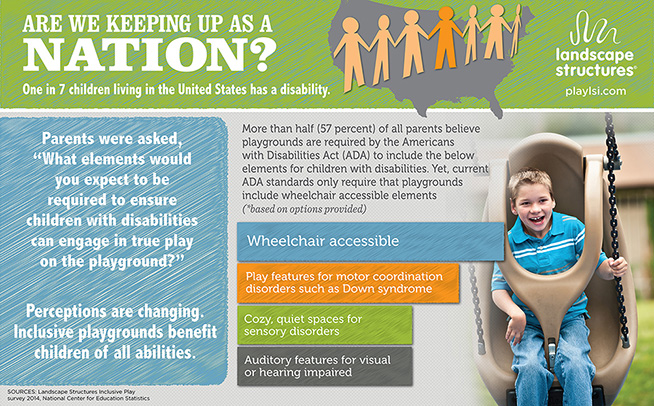Today marks the eighth annual World Autism Awareness Day. This day brings autism organizations around the world together to help raise awareness about the disorder affecting nearly 1 in 68 children. Because of these stats and the fact that there are one in seven children in the U.S. living with a disability, we took a close look at public playground requirements for children with disabilities by conducting a survey of nearly 900 parents of children 12-years-old and younger.

More than half (57 percent) of all parents asked about playground requirements for children with disabilities, mistakenly believe playgrounds are required to have elements designed for children with autism spectrum disorders, Down syndrome, and visual and hearing impairments. That means that people who think they’re designing an inclusive playground based upon ADA standards are really only designing to the minimum requirements and could be missing a huge need in their community.
Over the past few years, we’ve learned about a desire to include sensory play experiences and multigenerational opportunities for social interaction. Planners also want to make sure the community or school playground offers enough challenge for children who are typically developing as well so that there are opportunities for healthy interaction among children of all abilities. Our survey echoed that idea… nearly 75 percent of parents believe it is important that their children have an opportunity to play with a variety of children, including those with disabilities.
Overall, when planning an inclusive playground, inclusion should be used as a guiding principal—a checkpoint that you continue to question, “How are we fulfilling this need?” Learn more about inclusive play at playlsi.com, and see more results from our Inclusive Play survey.

